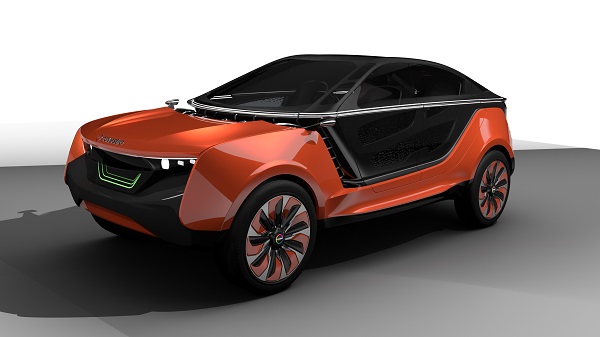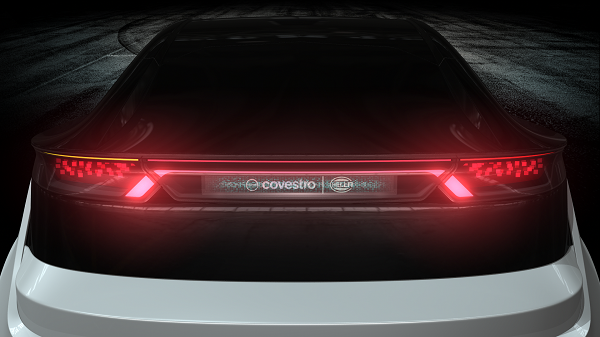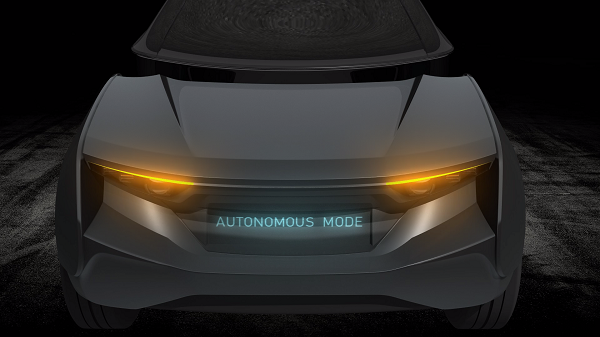 |
Hella and Covestro reveal a new design for automotvie signal lighting. (All Photos Courtesy of Hella)
|
Together with Covestro, one of the largest polymer manufacturer in the world, lighting and electronics specialist HELLA has developed a new design for vehicle signal lighting using holographic technology. Since 2012, both companies have been pooling their expertise in the areas of plastics technology, as well as design and lighting technology, in order to use signal lighting as a style element. For this reason, the companies have been developing innovative designs for the front and rear lighting of electric cars in collaboration since 2015. The result is holographic lighting with 3D effects, as well as a seamless and aerodynamic design. A show car demonstrating this will be presented in Düsseldorf from October 19 to 26, 2016, as part of Covestro’s presence at the K Trade Fair, the leading trade fair for the plastics and rubber industry (Hall 6, Stand A75).
The rear of the vehicle is comprised of a lamp with three parts, each equipped with holographic technology. With this, the two companies are presenting a world premiere. Designers at HELLA developed the holograms before Covestro then incorporated these into a transparent holographic film, which retains the design and is laminated onto a 3 mm glass plate. For series applications in the future, plastic will be used instead of glass. "Holographic films are perfectly suited for integrating different lighting functions into the body in a space-saving and unobtrusive way. The installation depth can be reduced and automotive manufacturers have the possibility to install more compact lamps," explains Dr. Michael Kleinkes, Head of Development Lighting Technology at HELLA. The holographic film is illuminated from behind using LED light sources and reflectors. This results in a 3D effect - as if the elements are floating freely in space. In both of the outer elements of the rear lamp, a hologram was inserted with numerous illuminating areas ("flakes"). Integrated into the tailgate is the middle lamp, on which the HELLA and Covestro company logos appear to be floating.
 |
The tail light adopts a diffuser film with diffractive optics developed by Covestro.
|
Above all, it is the design of the stop lamp that stands out at the rear of the vehicle. Instead of a separate center high-mounted stop lamp, HELLA has created a joint signature for the stop lamp and center high-mounted stop lamp. "As the statutory regulations have been fulfilled, it would be possible to implement this approach in series applications immediately," says Dr. Michael Kleinkes. The tail light is also visually combined with the direction indicator. For this, a diffuser film with diffractive optics developed by Covestro is used. This forms and distributes light beams with minimal loss of light, thus ensuring uniform light distribution. The LEDs located behind this in the two outer parts are designed two-colored so that both the direction indicator and the tail light functions can be generated. The functions are also animated, meaning that the effect of a sequential turn signal can be realized, for example.
 |
|
LED displays are integrated in both the front and rear of the vehicle in order to enable additional animations, such as the welcome light function. |
HELLA and Covestro have not only re-designed the rear of the vehicle, but also the front. The companies have created a seamless, uniform surface. The signal functions have been realized with a three-part EdgeLight light guide. This spans the entire front of the vehicle as a continuous lighting strip. The two outer parts of the light guide create the direction indicator lights as well as daytime running lights, which can be dimmed to position lighting. The middle light guide is responsible for the continuous daytime running light and position light signature. These functions can also be animated. The area in front of the vehicle is illuminated using four so-called ComLED modules. The two main lighting functions of low beam and high beam lighting are executed by the matrix HD84 module developed by HELLA.
LED displays are integrated in both the front and rear of the vehicle in order to enable additional animations, such as the welcome light function. In the future, this could not only be possible when stationary but also during driving, in combination with other light functions, for example. When braking, for example, it would be possible to illuminate not only the stop lamp, but also show the additional indicator "STOP".
Visitors at the K Trade Fair in Düsseldorf will be able to gain deeper insight into the new design and experience the direction of future vehicle lighting live.














